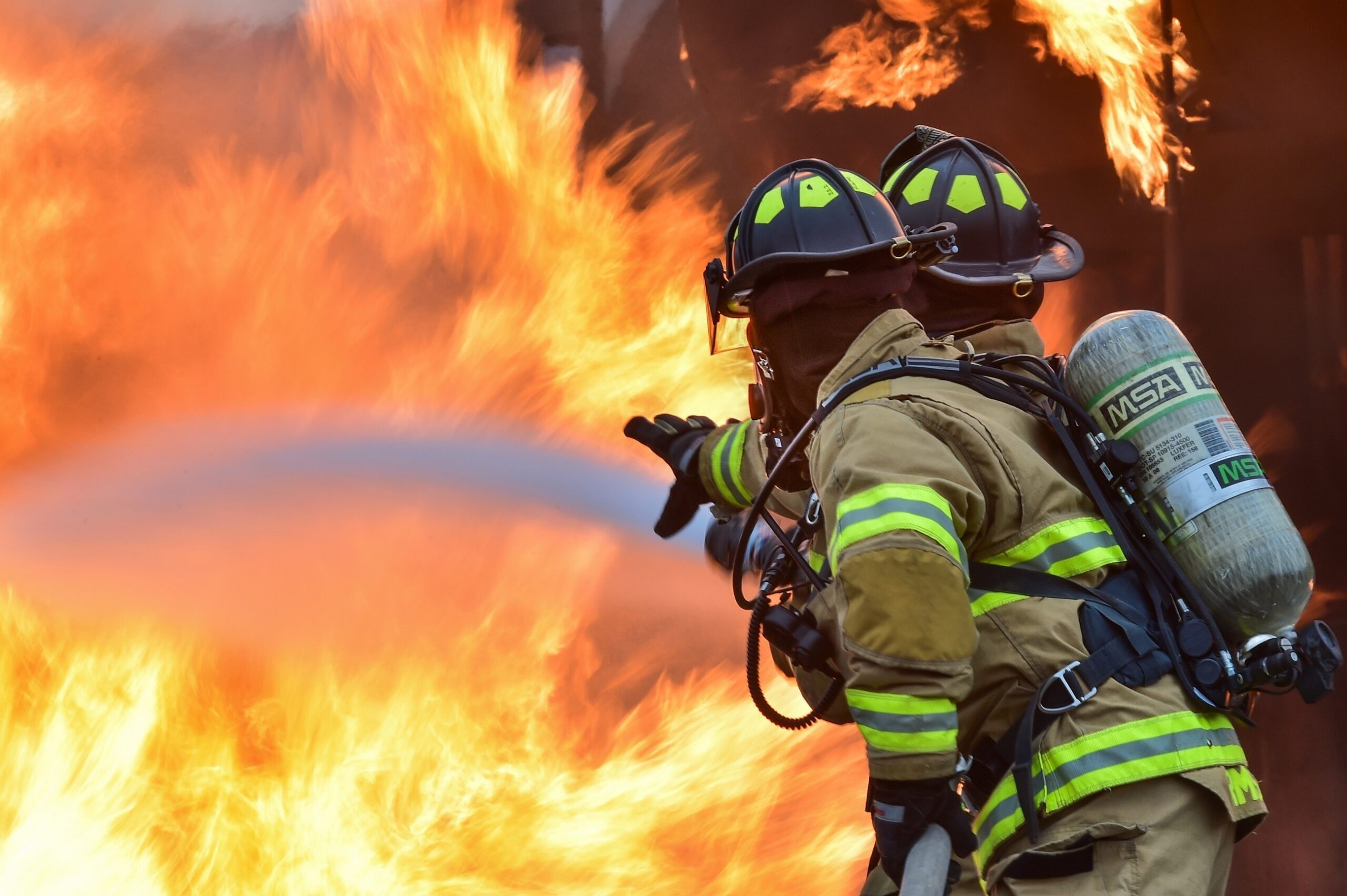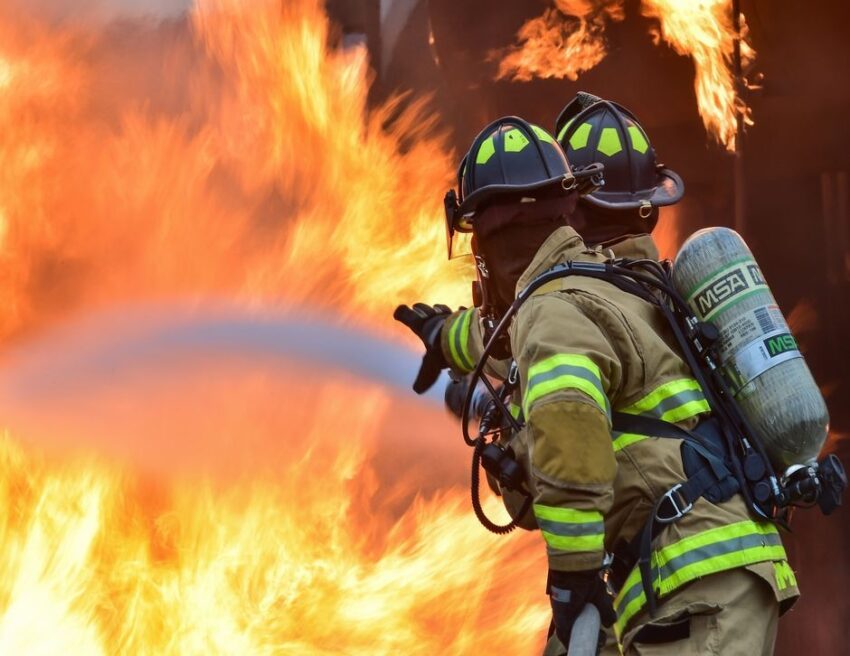On the 5th of June 2022, a fire broke out at the container terminal close to Chittagong port causing unprecedented loss of lives and property. According to senior port officials, there has been almost 50 fatalities and numerous injuries. While the loss of lives and properties is the biggest tragedy in the shipping industry this year so far, this incident also tells us why this sector needs to put in a bigger effort towards increasing the safety of its workers, the surrounding areas, and the environment.
In today’s blog, we have provided a brief report that will bring you up to speed on the container terminal fire at the BM Container Depot.

The fire at the container terminal near Chittagong
According to SI Nurul Alam, the fire broke out at around 9 pm on the 4th of June at the BM Inland Container Depot- a joint venture of Bangladesh and the Netherlands. However, the first explosion occurred around midnight. This was followed by several explosions at a container filled with hazardous substances. Soon after the fire spread from one container to another.
This container terminal is located near the Chittagong port the main international seaport of the country. Even some of the firefighters present on spot to douse the flame were injured. The explosions shook the surrounding areas and even shattered the windowpanes of neighboring houses. Several people are still missing and death toll could even rise further. A special unit of Bangladesh military was aiding the firefighters to bring the situation under control. In addition, the troops also worked to prevent the chemicals from contaminating the canals in the surrounding coastal areas. However, a lot of chemical substances are still present on the spot causing breathing problems for the people living nearby.
It took three days to bring the fire under control
Fire fighters and government officials finally brought the fire under control three days after the explosion. As of now, the fire has been doused completely. Moreover, there is no further risk of explosion since the fire fighters have singled out all the containers containing chemicals. Putting out the fire was all the more difficult since the firefighters first arrived at the terminal thinking it to be a small fire. They had no idea about the extent of the fire or about the presence of hazardous goods in the containers. Additionally, around 25 fire brigades relentlessly fought for nearly 20 hours to bring the fire under control. At least 9 firefighters succumbed to the accident and several of them are recovering in the hospital.
Maersk has promised complete cooperation with the government for any assistance regarding the investigation behind the explosion. As per their statement, “We are in touch with our customers to keep them informed on the status of their cargo as and when we have confirmed information coming through.” Sheikh Hasina the Prime Minister of Bangladesh has expressed her shock and grief at this accident. Moreover, she has also assured about adequate treatment for the injured personnel.
The reasons behind the container terminal fire at Chittagong
Officials have concluded that a container full of hydrogen peroxide chemical caused the explosion. Once the hydrogen peroxide caught fire it soon spread to other containers full of garments. Additionally, officials have further pointed out that incorrect labeling of the container further worsened the situation. Because of the incorrect labeling the firefighters tried to douse the flame with water. However, fire caused by hydrogen peroxide needs to be doused by foam. Since they unintentionally tried to douse the flame with water, it resulted in an explosive reaction and further exacerbated the situation. As stated by the Assistant Director of the local firefighting service, “There are some rules to keep hydrogen peroxide. Had we known this, we would never throw water. We would never take our vehicle inside the depot.”
The BM Inland Container Depots is one of the largest inland container terminals in Bangladesh. It works in tandem with the Chittagong Port Authority and houses more than 5000 containers for handling cargoes for export and import. The scale of the accident at one of the busiest container terminals in the country definitely has many lessons for the terminal and port authorities. Additionally, Bangladesh has a history of industrial disasters that are attributed to poor infrastructure, corruption and lax in law enforcement. Nevertheless, several multinationals have manufacturing units in Bangladesh and these companies should take up responsibilities and improve the safety of the workers. This could greatly help to prevent such untoward incidents in the future.
Risks of handling hydrogen peroxide
Every year, Bangladesh exports over $20 m worth of hydrogen peroxide to countries like India, Pakistan, and Vietnam. Hydrogen peroxide is a chemical compound that is usually manufactured as a diluted chemical. It is a transparent and somewhat viscous chemical with a pungent smell. It is used in making deodorants, disinfectants, the manufacture of other chemicals, rocket fuels, and for water and sewage treatment. While the concentrated form of this chemical involves extreme health hazard, the diluted version of the 3-30 % solution also entails potential health and safety risks. Precisely for this reason, this chemical demands careful handling and storage.
Tips for freight forwarders and warehouse operators to ensure protection from exposure to hydrogen peroxide
Freight forwarders and warehouse operators handling hydrogen peroxide need to undertake several safety measures. These include the installation of safety showers, eyewash stations, a steady supply of gloves, splash goggles, and a vapour respirator. Additionally, the use of PPE is an absolute must for personnel handling this chemical. The chemical itself is not combustible. However, it is a strong oxidizer. As a result, it enormously increases the chances of combustion of other substances in its proximity. It can ignite items like paper, oil, wood and undoubtedly garments which was the case with the fire at BM Container Depot.
Before working with this chemical, it is important to provide adequate training to the handlers. You would need to do the following things to avoid spillage or leakage of hydrogen peroxide. To begin with, you need to evacuate the premise and try to do away with any sources of combustion. The spilled chemical has to be soaked through dry sand, or vermiculite. Lastly, you need to wash, clean, and ventilate your premise upon the completion of the cleanup. Moreover, you need to keep this chemical away from confined spaces such as sewers. This only increases the chances of an explosion. Additionally, you need to dispose of the spilt hydrogen peroxide as a designated hazardous waste.
-
Storage of hydrogen peroxide
This chemical in its concentrated form should not come with any impurities since it increases the chances of violent decomposition. You can add Acetanilide to prevent the decomposition of this chemical. Hydrogen peroxide can combust when brought in close proximity with the following substances- shredded metals, sodium hydroxide, potassium hydroxide, reducing agents, oxidizing agents, combustibles and metals like zinc, copper, brass, silver, zinc, or iron.
You should also keep it safely away from substances such as iodides, sulfites, ammonia, and ammonia carbonates. You need to store this chemical in areas with sufficient ventilation that are not too hot. Keep in mind that the slightest lax in proper sealing and ventilation could result in the decomposition of the substance. This will lead to the release of oxygen which in turn will result in pressure build-up and eventually an explosion. Lastly, you need to make use of explosion-resistant electrical fitting in your storage area.


